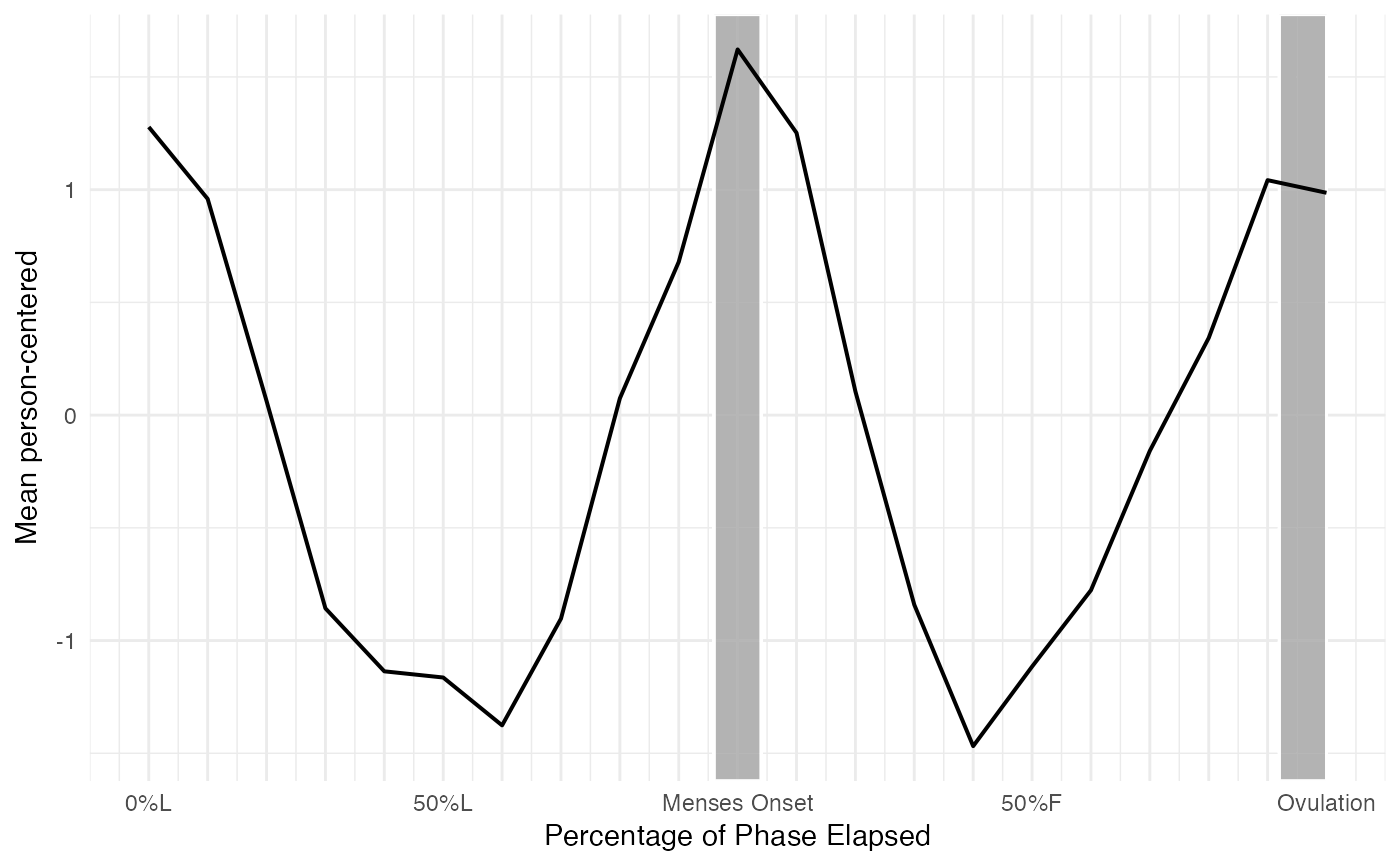Plot Symptom Data Across the Menstrual Cycle
cycle_plot.RdThis function creates a visual representation of symptom data across the menstrual cycle. It calculates mean and deviation values for the symptom by participant, allows centering the visualization on menses or ovulation, and provides flexibility in choosing the y-axis scale for the plot.
Usage
cycle_plot(
data,
symptom,
centering = "menses",
include_impute = TRUE,
y_scale = "person-centered_roll",
rollingavg = 5,
align_val = "center",
se = F
)Arguments
- data
A dataframe containing the input data. Must include columns for scaled cycle day variables and the symptom variable. Scaled cycle day variables are added to your dataframe after applying the calculate_mcyclength() and calculate_cycletime() functions. (See examples below)
- symptom
A string specifying the symptom variable to analyze.
- centering
A string indicating the centering phase of the cycle ("menses" or "ovulation"). Default is "menses".
- include_impute
A boolean indicating whether to use imputed cycle time values based on NC cycle length norms. Default is TRUE.
- y_scale
A string specifying the y-axis scale. Options are "person-centered", "person-centered_roll", or "means". Default is "person-centered_roll".
- rollingavg
A numeric indicating how many days of a rolling average to use, the default is 5
- se
A boolean indicating whether to include a standard error ribbon. Default is False
- alignval
From the zoo package, using rollapply: alignment of rolling avg. Can be "center", "left", "right"
Value
A list containing the following elements: 1. A dataframe: The input dataframe augmented with person-centered mean (.m) and deviation (.d) values for the symptom variable. 2. A summary dataframe: Contains the summarized y-axis variable values for each 5% increment of the cycle percentage. 3. A ggplot object: A plot visualizing the summarized data across the menstrual cycle.
Examples
# Example usage:
cycle_df = cycledata
data_with_scaling <- pacts_scaling(
cycle_df,
id = id,
date = daterated,
menses = menses,
ovtoday = ovtoday,
lower_cyclength_bound = 21,
upper_cyclength_bound = 35
)
#> id: id
#> date: date
#> menses: menses
#> ovtoday: ovtoday
cycle_plot_data <- cycle_plot(
data_with_scaling,
"symptom",
centering = "menses",
include_impute = TRUE,
y_scale = "person-centered"
)
cycle_plot_data$plot
#> Warning: Removed 1 row containing missing values or values outside the scale range
#> (`geom_line()`).
